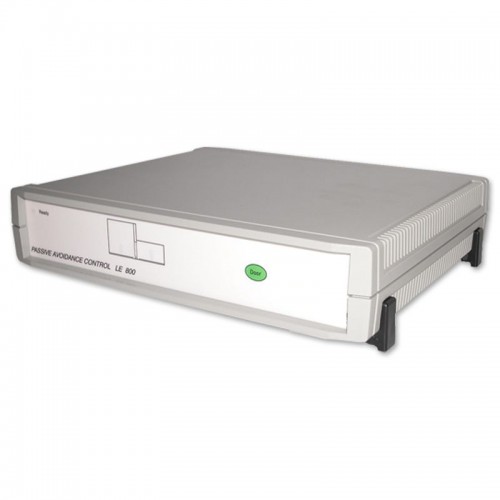-
Products (54)
- - Animal Surgery (2)
- - Centrifuge (4)
- - Common Labwares
- - Electrophoresis and Gel Imaging System (5)
- - Fermentation System (1)
- - Freezers and Refrigerators (3)
- - Hot Plate and Stirrers (9)
- - Liquid Handling (4)
- - Mixers and Rotators (4)
- - Pharmaceutical Tester (4)
- - Shakers and Incubators (5)
- - Syringe and Suction Pump (6)
- - Thermal Cycler (3)
- - Water Bath and Circulators (3)
- - Water Purification System (1)
- Applications (96)
- Common Labwares (109)
Compact Passive Avoidance (Panlab)
Compact passive avoidance, a fear-motivated tests classically used to assess short-term or long-term memory on small laboratory animals (rat, mice).
- Weight transducer technology for accurate animal detection
- Very precise and stable intensity of shock delivered into the black compartment
- No PC card is required (USB coms.)
- Safety System which guarantees that the shock intensity received by the animal is always the same value independently of the grid bars treaded
|
Item# |
Description |
|---|---|
|
76-0199 |
(LE870) Passive Avoidance Cage, Rat |
|
76-0200 |
(LE872) Passive Avoidance Cage, Mice |
|
76-0159 |
(LE10026) Shock Generator with Scrambler |
|
76-0202 |
ShutAvoid Software, up to 8 boxes |
Passive avoidance is fear-motivated tests classically used to assess short-term or long-term memory on small laboratory animals (rat, mice).
Basically, passive avoidance working protocols involve timing of transitions, i.e. time that the animal takes to move from the white compartment to the black one after a conditioning session -in which the entry into the black compartment is punished with a mild inescapable electrical shock- is carried out.
The Panlab passive avoidance box (LE870/872) is defined by a large white illuminated compartment and a small black dark compartment separated by a guillotine gate. The animal position is detected by using high sensitivity weight transducers providing higher effective and reliable detection of animal responses (zones entries) than systems based on photocells beams or on grid floor displacements.
Panlab Passive Avoidance boxes is controlled by the ShutAvoid software, allowing to run passive avoidance experiments in several boxes simultaneously. It is not necessary the use of PCI board installed into the PC. The link is carried out by one only cable from one Box to the other. The first Box is connected to PC or Laptop through a RS232/USB communcation.
The passive avoidance test can also be conducted in a shuttle box for both the active and passive avoidance tests.





On Wing Tat Co. Ltd
20/F, Unit 1-5, Midas Plaza,
1 Tai Yau St.,San Po Kong,
Kowloon, Hong Kong